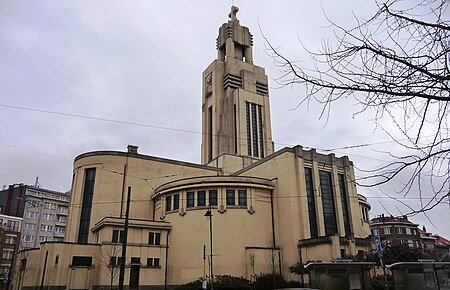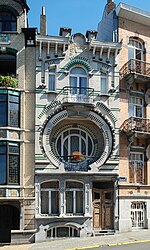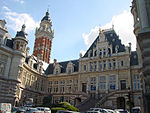Church of St. Augustine, Forest

The Church of St. Augustine (French: Église Saint-Augustin, Dutch: Sint-Augustinuskerk) is a Roman Catholic parish church located in Forest, a municipality of Brussels, Belgium. It is dedicated to Saint Augustine. Designed by the architects Léon Guiannotte and André Watteyne in Art Deco style, and built between 1932 and 1935, it is one of three major churches in Brussels made of reinforced concrete (the other two are the Basilica of the Sacred Heart in Koekelberg and the Church of St. John the Baptist in Molenbeek). The building received protected status on 8 August 1988.The church is located on the Place de l'Altitude Cent/Hoogte Honderdplein (a square named due to its altitude one hundred meters above sea level), not far from Duden Park and the Chaussée d'Alsemberg/Alsembergse Steenweg. This site is served by the bus and tram stop Altitude Cent/Hoogte Honderd (on lines 48, 51 and 70).
Excerpt from the Wikipedia article Church of St. Augustine, Forest (License: CC BY-SA 3.0, Authors, Images).Church of St. Augustine, Forest
Place de l'Altitude Cent - Hoogte Honderdplein,
Geographical coordinates (GPS) Address Nearby Places Show on map
Geographical coordinates (GPS)
| Latitude | Longitude |
|---|---|
| N 50.816388888889 ° | E 4.3366666666667 ° |
Address
Église Saint-Augustin - Sint-Augustinuskerk
Place de l'Altitude Cent - Hoogte Honderdplein
1190
Belgium
Open on Google Maps









